Exploring the world of cameras
Right now, the camera market is filled with a multitude of options, each catering to different needs and preferences. They come in all shapes and...
SCAiLX AI Imaging
SOFTWARE
Excellence. Every day. Every time.
MARKETS SERVED
Excellence. Every day. Every time.
ONLINE TOOLS
DOCUMENTATION
Excellence. Every day. Every time.
OUR COMPANY
OUR PRESENCE
OUR PARTNERS
Excellence. Every day. Every time.
3 min read
Derya Yoruk
Feb 20, 2024
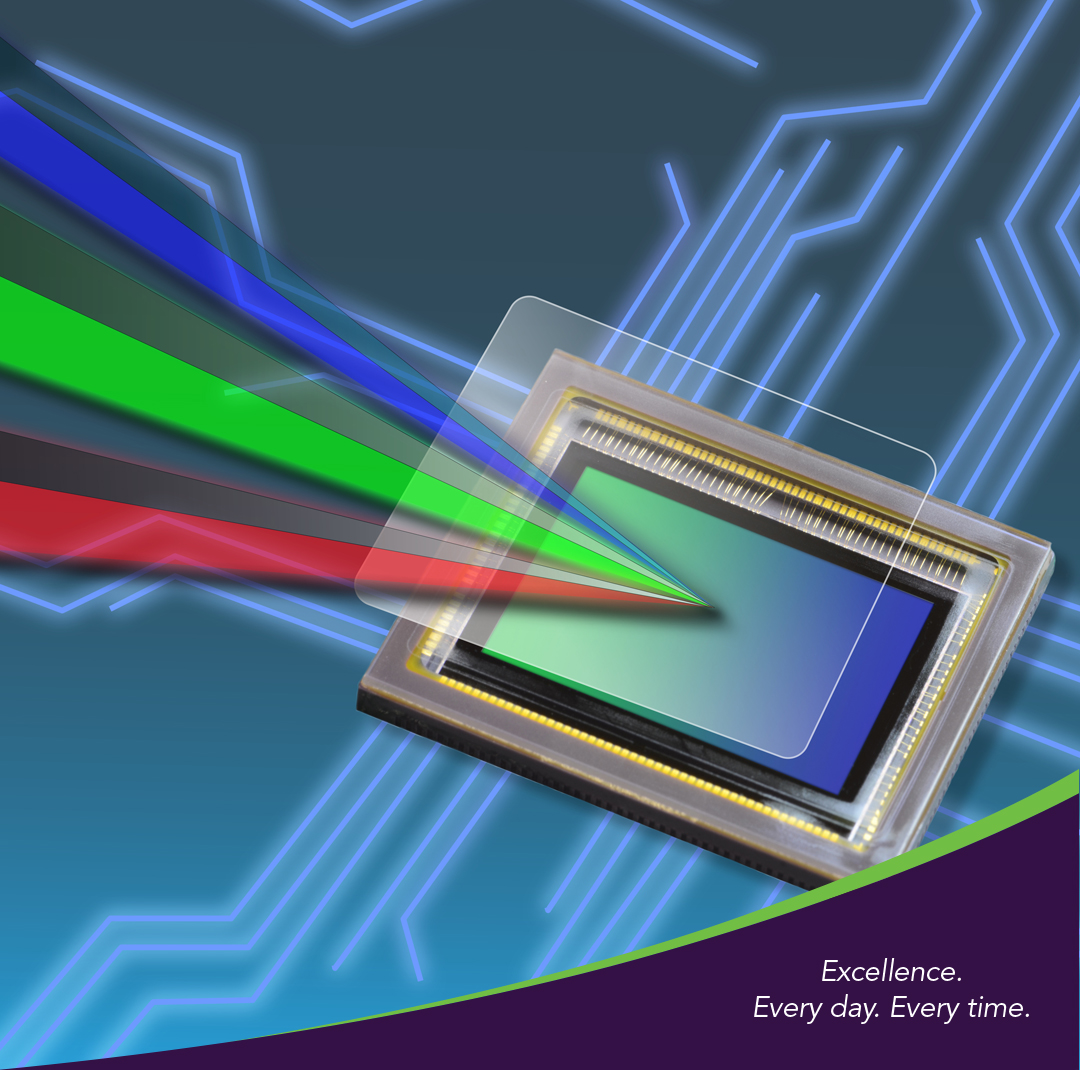
The industrial-grade camera market has undergone significant growth and diversification in recent years with a vast array of camera types and models to choose from. With such a variety of industrial imaging solutions and cameras available, it becomes crucial to understand the distinctions between each type in order to determine the most suitable option for your specific needs. In this blog, we will examine the differences between color, monochrome, and near-infrared (NIR) cameras.
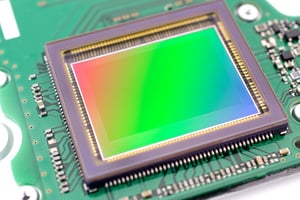 Let’s start with the more obvious comparison, color vs monochrome (mono). A color camera records images in color, as you might expect, a mono camera records images in gray value or black-and-white. How the camera records an image all starts with the image sensor. In general, a sensor comprises an array of photosensitive diodes, or pixels, that register the amount of light hitting a specific spot of the array. In the case of a two-megapixel camera, there are 2 million individual pixels. Take the data from each of these 2 million pixels and plot the magnitude of each value in a 2D grid. Assign a gray value to each data point based on the magnitude and you will get a grayscale image. For a monochrome camera, this would be the image in its raw format.
Let’s start with the more obvious comparison, color vs monochrome (mono). A color camera records images in color, as you might expect, a mono camera records images in gray value or black-and-white. How the camera records an image all starts with the image sensor. In general, a sensor comprises an array of photosensitive diodes, or pixels, that register the amount of light hitting a specific spot of the array. In the case of a two-megapixel camera, there are 2 million individual pixels. Take the data from each of these 2 million pixels and plot the magnitude of each value in a 2D grid. Assign a gray value to each data point based on the magnitude and you will get a grayscale image. For a monochrome camera, this would be the image in its raw format.
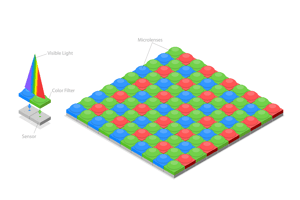 Now, let’s look at a color imaging sensor. A color sensor starts just like the mono sensor, then, a filter with different colors is applied over the sensor. The most common color filter is the Bayer pattern, there are others like the X-Trans, RGBE, and Super-CCD EXR to name a few. However, for this discussion let’s stick with the Bayer pattern. The Bayer pattern is made up of red, green, and blue color filters that are aligned to the pixels of the sensor. The image from the sensor must then be processed using a demosaic algorithm to reconstruct the color information before presenting the final image.
Now, let’s look at a color imaging sensor. A color sensor starts just like the mono sensor, then, a filter with different colors is applied over the sensor. The most common color filter is the Bayer pattern, there are others like the X-Trans, RGBE, and Super-CCD EXR to name a few. However, for this discussion let’s stick with the Bayer pattern. The Bayer pattern is made up of red, green, and blue color filters that are aligned to the pixels of the sensor. The image from the sensor must then be processed using a demosaic algorithm to reconstruct the color information before presenting the final image.
So, what are the pros and cons of using a color camera vs a mono camera? Well, the obvious one is color, if you need to identify colors for your application, or simply want the most realistic image possible from your camera then a color camera is for you.
On the other hand, all things being equal with the sensor except for the Bayer pattern filter, the mono camera will be approximately three times more sensitive to light. So, if your project does not demand a color image, but is constrained by available light, a mono sensor could be the better choice. Additionally, mono sensors can provide more image resolution than their color counterparts. This is due to the demosaic algorithm being used. Today’s algorithms are quite robust, however, a direct measurement will still provide higher edge contrast or effective resolution.
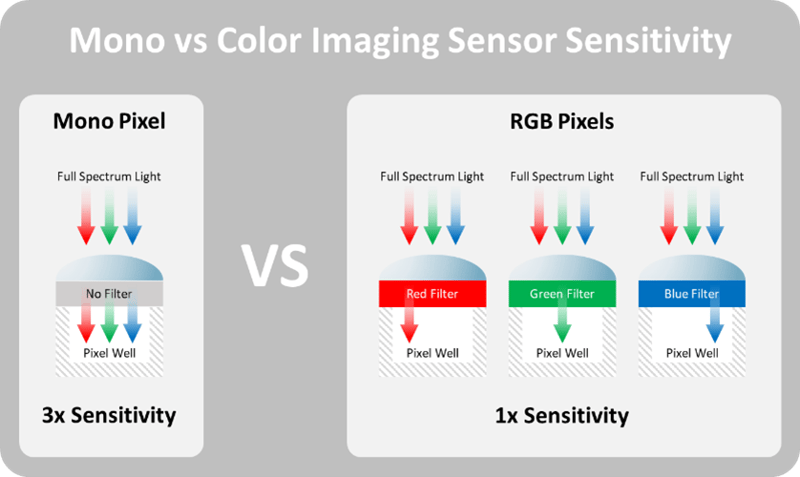
The NIR, or near infrared camera is an extension of the mono camera that can be used effectively in the NIR spectrum. To better understand this relationship, let’s look at the electromagnetic spectrum, specifically the visible and infrared portions.
The visible spectrum begins at 380 nanometers, which humans see as violet, and goes up to 780 nanometers which humans see as red. From there as you get higher numerically in the electromagnetic spectrum, you enter the infrared range. In this range, NIR starts from where the visible range ends at 780 nanometers and goes up to about 1000 nanometers. Beyond that, you have short-wave infrared (SWIR), mid-wave infrared (MWIR) followed by long-wave infrared (LWIR). The cameras in this category are typically sensitive in the visible spectrum from 380 nanometers out to around 1000 nanometers in the NIR range.
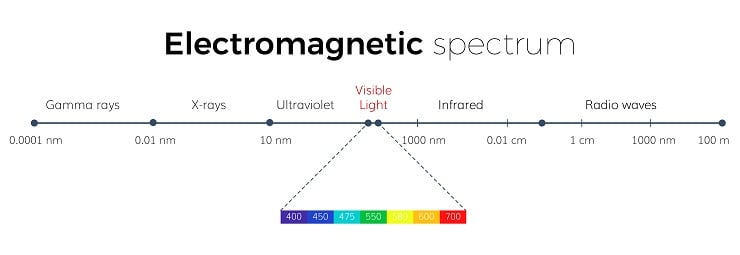
Thanks to advancements in sensor technology, NIR cameras have become more affordable and compact in recent years.
Understanding the differences between color, monochrome, and near-infrared cameras is essential in selecting the right camera for specific project needs. While color cameras offer the advantage of capturing realistic images, monochrome cameras excel in low-light conditions and provide higher image resolution. Near-infrared cameras, on the other hand, extend the capabilities of monochrome cameras into the NIR spectrum providing additional capabilities.
Whether your project requires color images, increased light sensitivity, or NIR performance, Videology can provide a solution to meet your needs. As a "one size fits all" approach does not always work for industrial or OEM applications, Videology can also create a customized solution tailored to your application's requirements. To find the right camera for your application contact Videology and leverage our 25 years of experience.

Right now, the camera market is filled with a multitude of options, each catering to different needs and preferences. They come in all shapes and...

As a global leader in the engineering and manufacturing of industrial-grade embedded video cameras, we are thrilled to announce the latest...

When dealing with IP board cameras, understanding latency is crucial. Latency impacts how quickly an image or video reaches the viewer, affecting...
HEADQUARTERS LOCATION
Videology Industrial-Grade Cameras
35 Hampden Road
Mansfield, MA 02048
United States
Directions
+1 401 949 5332
sales@videologyinc.com